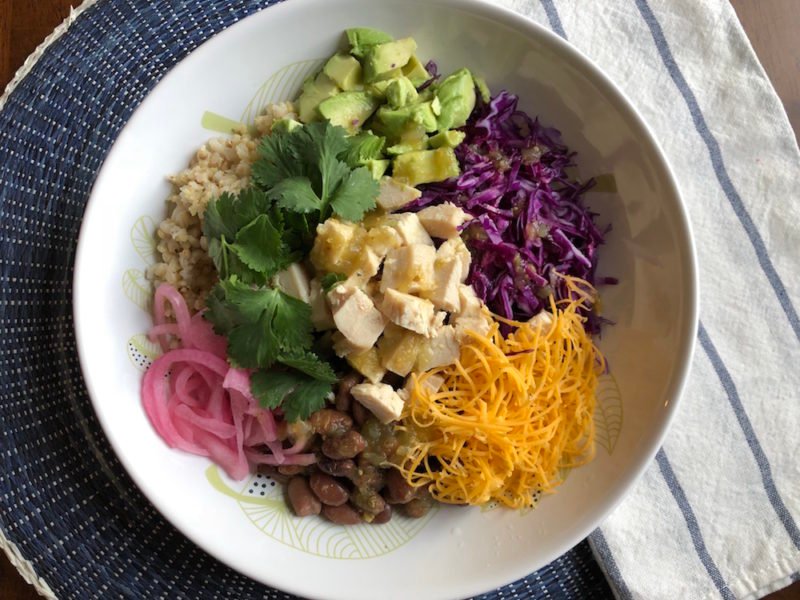 My latest column in The Seattle Times is about grain bowls (“Grain bowls are trending. Here’s how to make your own.“). While grains are the featured player in this food-symphony-in-a-bowl, beans also play an integral part in the bowls I prepare at home, and thus the bowls I prepared for the Times. Does it matter if you used canned beans, or cook your own beans from dried? Let’s discuss.
My latest column in The Seattle Times is about grain bowls (“Grain bowls are trending. Here’s how to make your own.“). While grains are the featured player in this food-symphony-in-a-bowl, beans also play an integral part in the bowls I prepare at home, and thus the bowls I prepared for the Times. Does it matter if you used canned beans, or cook your own beans from dried? Let’s discuss.
The benefits of dried beans
First, I’m not opposed to canned beans. (I think fears about canned foods are somewhat overrated, especially if they make up a minority fraction of your overall diet). I always keep some cans of my most-used beans—chickpeas, white beans, black beans and pinto beans—on hand in case of a meal prep emergency. But whenever humanly possible, I cook my own beans from scratch, and here’s why:
Less expensive. I just replenished my supply of dried Great Northern beans, for a low, low price of $1.19 (on sale) for a 1-pound bag. That will yield around 6 cups of cooked beans, the amount in 3.5 cups of canned beans. You would be hard-pressed to buy even three cans of beans for $1.19.
More variety. Visit any grocer with a robust bulk foods section, and you will likely find many, many more varieties of dried beans than you could possibly buy in canned form. I have to restrain myself when I visit Big John’s PFI, because the dried beans are so beautiful!
Better flavor. When you cook beans from scratch, you can infuse them with flavor rather than simply layering on flavor in the final dish. I am a die-hard advocate of brining your dry beans as you soak them, a practice I adopted after learning about it last year. (For details on how to do it, check out my Times article “Don’t know how to cook vegetables well? These tips will help you make them at home.”)
Time management
Hummus is a staple in our house, and I nearly wept salty tears of joy when I finally had the mental bandwidth to make my own again 100 percent from scratch, starting with dried chickpeas. (For my recipe, see my Times article from earlier this year, “Hummus and spice are nutritious and nice.”)
I say mental bandwidth, because while on one hand, cooking your own beans takes more time than opening a can, on the other hand, it’s not really more time intensive. It’s easy to soak beans all night—or all day while you’re at work—then cook them when you’re around to keep an eye on them and remove them from heat at the appropriate stage. Actual hands-on time is pretty minimal. My issue the last several months was that confronted with an overwhelming list of to-do’s every single day (and evening) of the week, remembering to soak and cook beans just wasn’t happening. That’s where canned beans come in handy.

How to handle leftovers
When you cook beans from dried, you often won’t be using them all at once, unless you’re planning a bean-based soup or casserole. So what to do with the extras? When cooking chickpeas to use in hummus, I usually plan enough extra to easily use up tossed into salads or grain bowls. But when I cook pinto bean or black beans, I go a little wild, tossing the extras in 1- or 2-cup amounts into the freezer (in freezer bags, of course). We frequently whip up Mexican-inspired dishes like faux huevos rancheros (basically a tortilla topped by leftover beans, an over-easy egg, shredded cheese, salsa and cilantro) or, you guessed it, grain bowls.
The freezer is really underused as a place to temporarily store extra cooked grains and beans, in my book. Feel like brown rice takes too long to cook when you get home from work, or other daily activities, and want to get dinner on the table, fast? It’s easy when you can just reheat cooked grains from your freezer (you can also buy precooked grains in the freezer section of many grocers, but it’s SO much more frugal to make your own).






